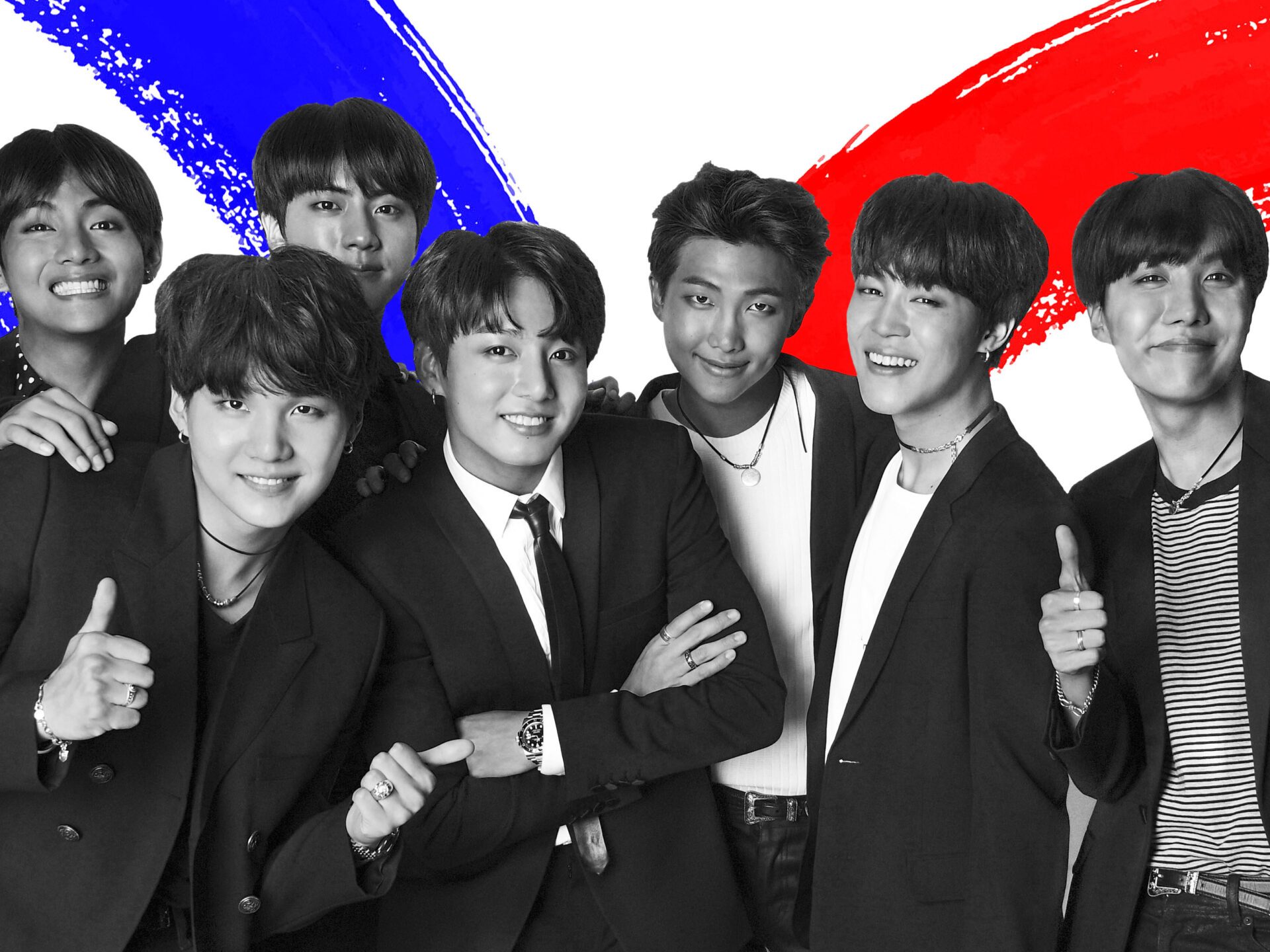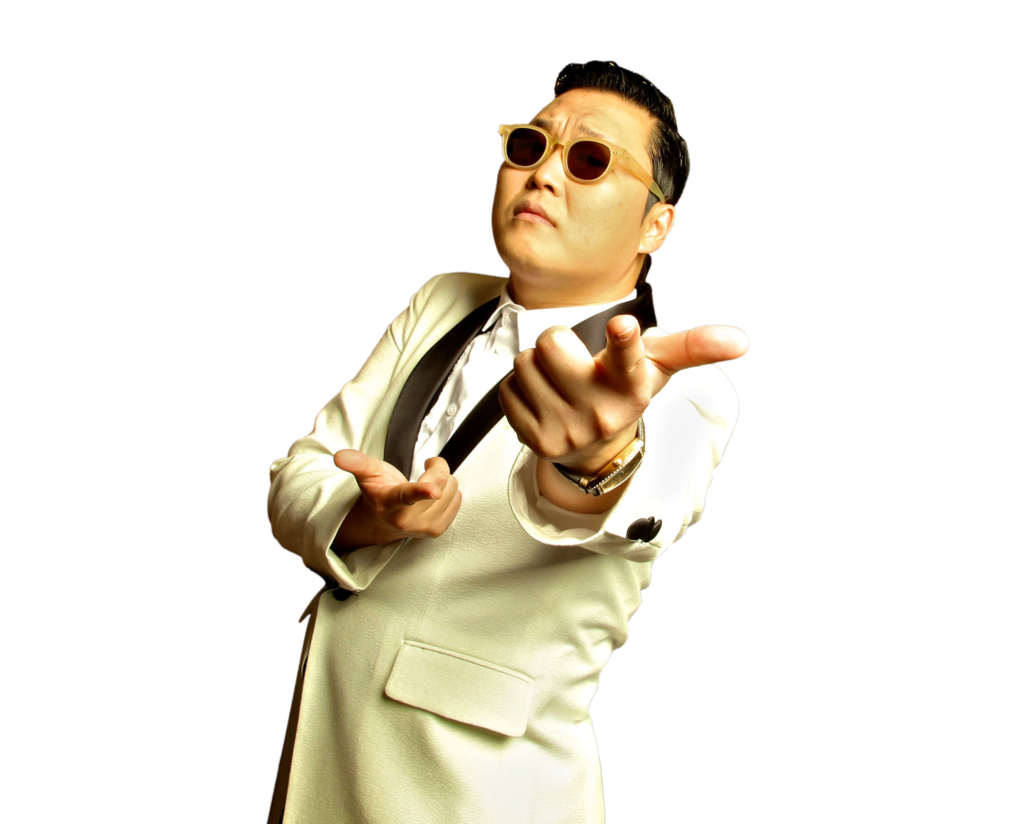Magazine

October 23, 2019

This article was originally published in Populous Magazine, our biannual publication featuring news, information, and trends from the worlds of sport, entertainment, and major public events. Find out more, and sign up to receive a free copy, here.
While global pop has traditionally been dominated by Western styles of music, South Korean K-pop is now challenging its supremacy. Music writer John Lewis analyses what factors have led to its success.
When the South Korean boy band BTS sold out London’s Wembley Stadium in June 2019, it was the latest in a series of milestones for this pop phenomenon from Seoul. A year before, they had topped the US Billboard charts. By the end of 2018 they had sold 14 million records globally – more than any Korean artist ever – and had addressed the United Nations General Assembly. They currently boast 19.8 million followers on Instagram.
According to the Hyundai Research Institute, BTS are worth around US$4 billion annually to the Korean economy, with more than 800,000 tourists visiting the country each year on the back of their international success. They arrive in the wake of other enormously successful K-pop acts such as Monsta X, Blackpink and EXO. While no one doubts the global influence of this musical genre, understanding exactly what fuels it is a lot trickier. From the haircuts to the videos to the dance routines, here is a guide to what has helped K-pop take over the world.
The uniformity of K-pop band members makes the fast, tightly choreographed, perfectly synchronised, knife-like dance routines even more aesthetically thrilling. Lurching between balletic shapes and jerky hip hop moves, the bands look like a gang of near-identical insects moving in unison at high speed. Members put themselves through hours of dance training and aerobic exercise in order to perform these routines, and also learn to sing while performing them.
Psy (below), the star behind the globally famous Gangnam Style, is atypical of the average K-pop star. Tubby, eccentric, educated in the US, he was well into his 30s when his song achieved success, and he had a history of writing his own surrealist lyrics. There are a few oddballs like Psy in the K-pop world – including the Southern-style rapper Keith Ape and 2NE1’s rapping singer CL – but few K-pop stars write or produce their own material. Uniqueness is not a selling point in the K-pop world.

The K-pop industry was quick to cater for its overseas fan base. Bands would re-record existing songs or entire albums in Japanese, Chinese, English or Malay, while the entertainment companies formed bands featuring non-Korean members. There’s an all-female quartet, for example, called Twice, featuring three Japanese and one Taiwanese; Got7 has one Chinese, one Thai and one Taiwanese-American. Increasingly, bands are run as pan-global franchises: EXO were originally divided into the Korean-language EXO-K and the Mandarin language EXO-M, while NCT have 21 members so they can perform in several locations at once; their diverse collective included an entire eight-piece Chinese section, with other members from Japan, Thailand and North America.
The year zero for K-pop is often cited as April 1992, when former heavy metal singer Seo Taiji performed on a live TV talent show. His song, a rave-style slice of swingbeat that started with a lengthy rap, got the lowest rating from the TV jury but became incredibly popular with young viewers. It set the template for a multi-million-dollar industry, with bands like the all-male quintet H.O.T, female trio S.E.S and female five-piece Baby V.O.X all becoming big stars in the mid-1990s. Ironically, when the Southeast Asian economy collapsed in 1997, K-pop flourished, with the government looking to music and TV dramas to boost tourism and exports.
Teenagers are brought into special schools where they live together in dormitories and undergo rigorous training, often singing, dancing, exercising and studying foreign languages for 12 hours a day.
Last year, a 23-year-old from Scotland called Stephanie Fairfield moved 5,000 miles to Seoul to be closer to the boy band BTS. K-pop fans are known for such behaviour. Most bands’ fan clubs have waiting lists, with prospective members forced to buy a certain amount of merchandise before being allowed admittance. K-pop fans even collectively bankroll electronic billboard adverts for their favourite bands, often at a cost of $30,000 or more.
When YouTube was launched in 2005, K-pop agencies were quicker than Western record companies to upload their artists’ videos, quickly gaining an international audience. The first crossover hits that broke into the US and European charts – Nobody by Wonder Girls, Gee by Girls’ Generation and Sorry Sorry by Super Junior – were high-fructose pieces of bubblegum electronica powered by colourful videos. Where the budgets for Western pop promos have plummeted in recent years, K-pop videos are mini-feature films that often cost around $100,000 each to make. The elaborate promotional films for some K-pop hits – Cry Cry and Lovey Dovey by T-ara, and One Shot byB.A.P – cost more than $1 million each.
Lorem ipsum dolor sit amet consectetur, adipisicing elit. Non facere corporis et expedita sit nam amet aut necessitatibus at dolore enim quis impedit eius libero, harum tempore laboriosam dolor cumque.
Lorem, ipsum dolor sit amet consectetur adipisicing elit. Illo temporibus vero veritatis eveniet, placeat dolorem sunt at provident tenetur omnis, dicta exercitationem. Expedita quod aspernatur molestias eum? Totam, incidunt quos.